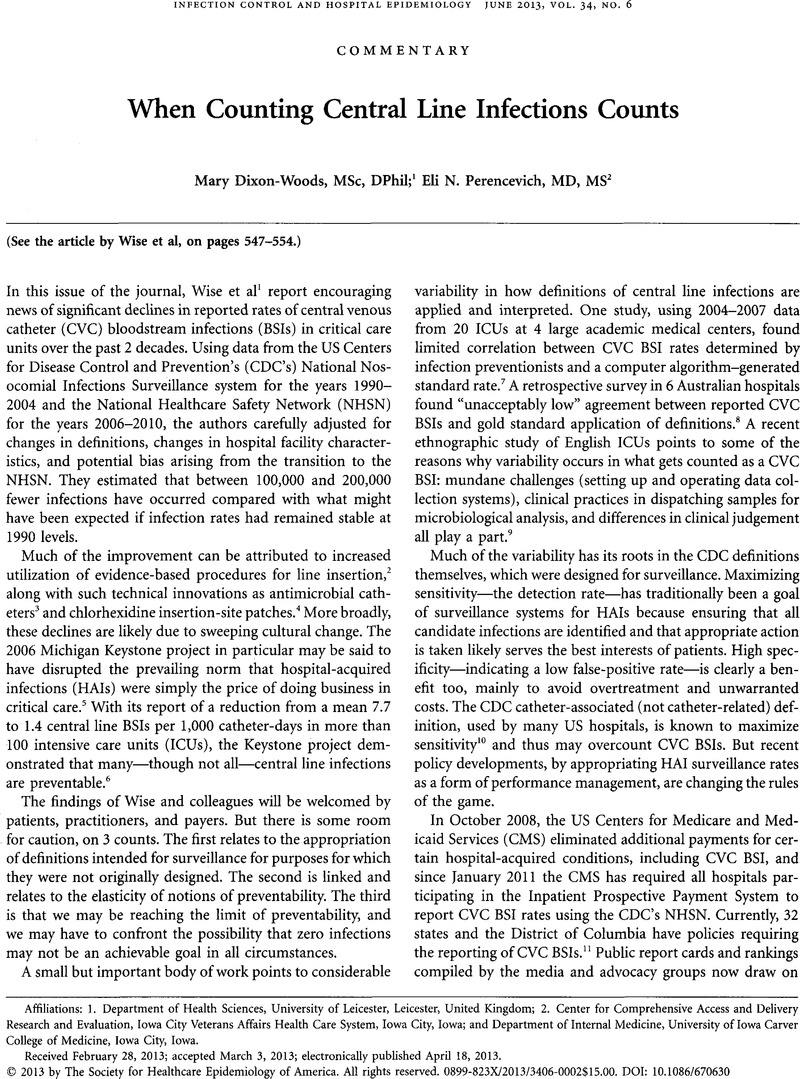Crossref Citations
This article has been cited by the following publications. This list is generated based on data provided by Crossref.
Dixon-Woods, Mary
Leslie, Myles
Tarrant, Carolyn
and
Bion, Julian
2013.
Explaining Matching Michigan: an ethnographic study of a patient safety program.
Implementation Science,
Vol. 8,
Issue. 1,
Cleveland, Angela Ahlquist
Harrison, Lee H.
Farley, Monica M.
Hollick, Rosemary
Stein, Betsy
Chiller, Tom M.
Lockhart, Shawn R.
Park, Benjamin J.
and
Chowdhary, Anuradha
2015.
Declining Incidence of Candidemia and the Shifting Epidemiology of Candida Resistance in Two US Metropolitan Areas, 2008–2013: Results from Population-Based Surveillance.
PLOS ONE,
Vol. 10,
Issue. 3,
p.
e0120452.
Diekema, Daniel J.
and
Pfaller, Michael A.
2015.
Manual ofClinical Microbiology.
p.
106.
Diekema, Daniel J.
and
Kraft, Colleen Suzanne
2017.
Rising Stakes for Health Care-Associated Infection Prevention: Implications for the Clinical Microbiology Laboratory.
Journal of Clinical Microbiology,
Vol. 55,
Issue. 4,
p.
996.
Generoso, José R.
Casaroto, Eduardo
Neto, Ary Serpa
Prado, Marcelo
Gagliardi, Guilherme M.
de Menezes, Fernando Gatti
Gonçalves, Priscila
Hohmann, Fábio Barlem
Olivato, Guilherme Benfatti
Gonçalves, Gustavo Potratz
Pereira, Andréa Marques
Xavier, Nathalia
Miguel, Marcelo Fernandes
da Silva Victor, Elivane
Edmond, Michael B.
and
Marra, Alexandre R.
2022.
Comparison of two electronic hand hygiene systems using real-time feedback via wireless technology to improve hand hygiene compliance in an intensive care unit.
Antimicrobial Stewardship & Healthcare Epidemiology,
Vol. 2,
Issue. 1,
Sullivan, Kaede V.
Pfaller, Michael A.
and
Diekema, Daniel J.
2023.
ClinMicroNow.
p.
1.
Sullivan, Kaede V.
Pfaller, Michael A.
and
Diekema, Daniel J.
2023.
ClinMicroNow.
p.
1.



